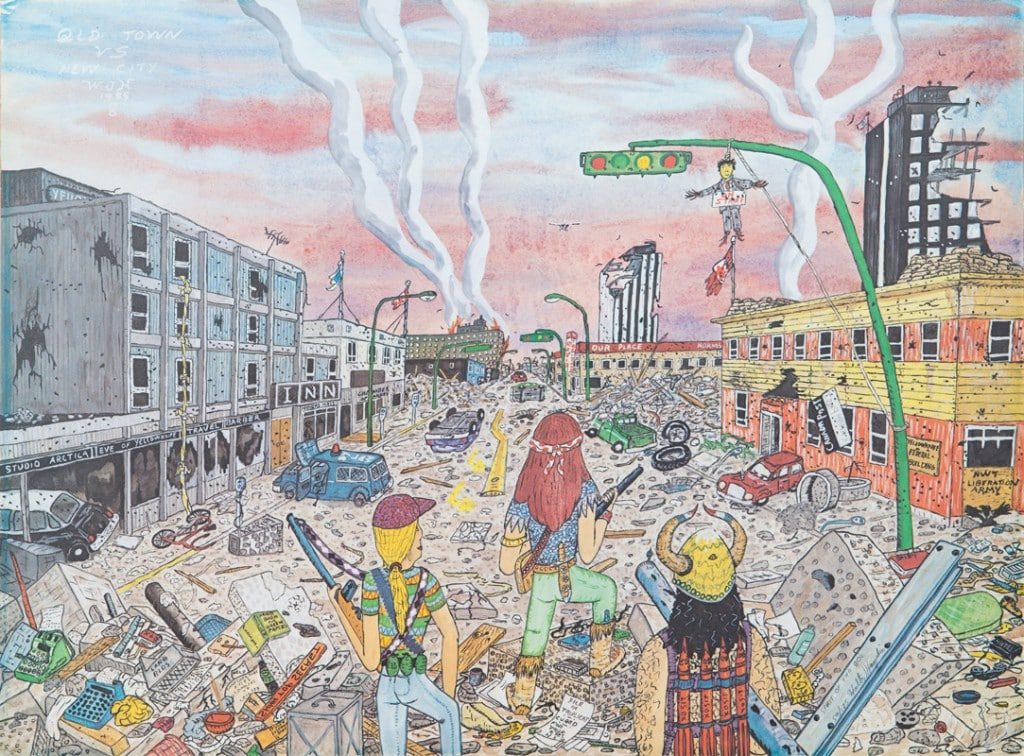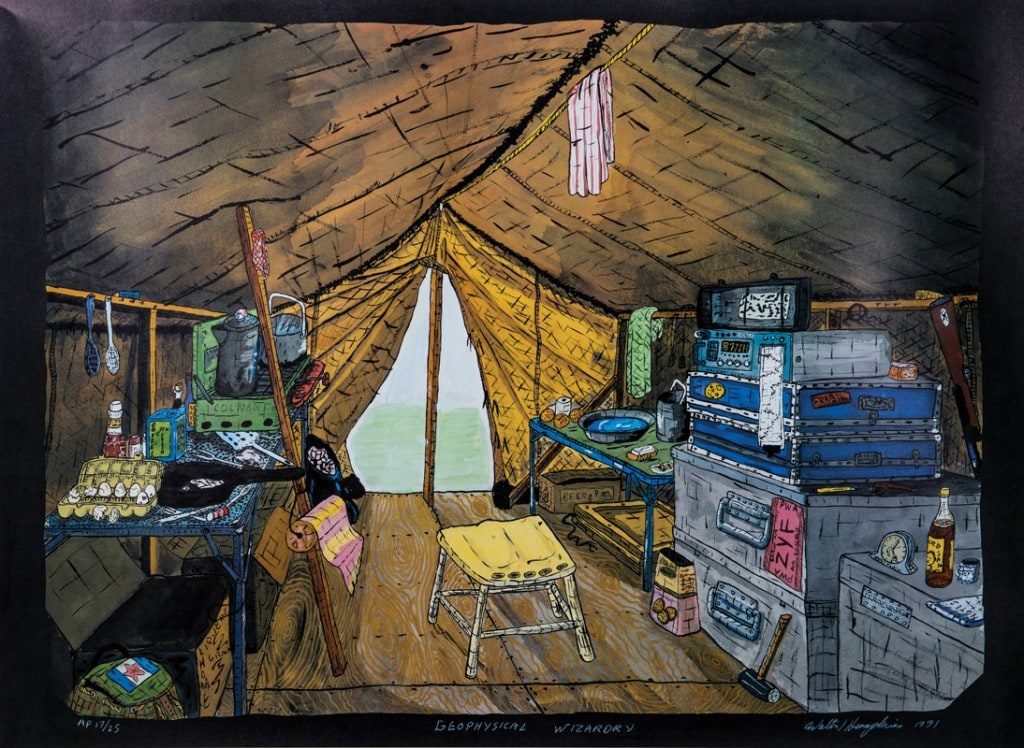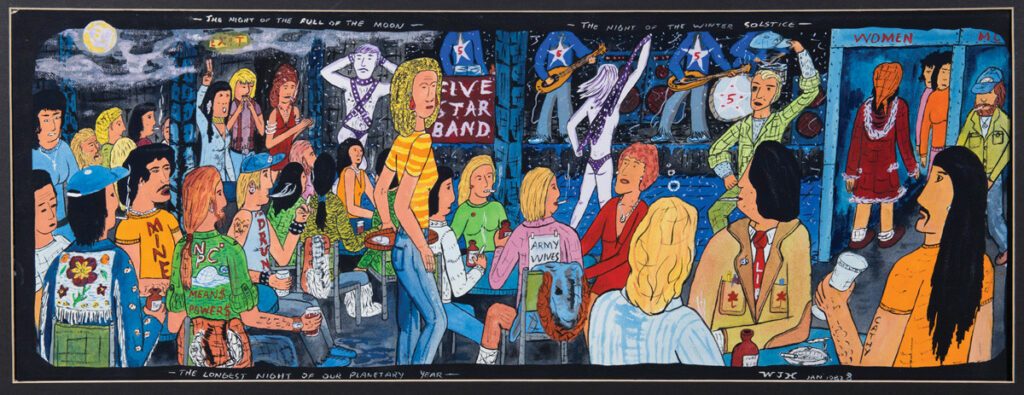The Night of the Full Moon/ The Longest Night of the Yellowknife Winter by Walt Humphries, 1982 “The Gold Range was such an eclectic mix of people: miners, civil servants, girls out for a night of drinking, Liberal candidates, it was just such a hodgepodge. There were only two bars in town, the Gold Range and the Trapline – you had to be members of the Elks and Legion. To be honest, I haven’t been to the Gold Range in years. With the additional bars in town, it’s much more segregated than it used to be. It’s much more cliquey. Back then everybody’d go to the Gold Range or the Trapline because they were the only bars. I remember when drinking and driving wasn’t illegal. I remember people saying, ‘I gotta drive home, I’m too drunk to walk.’”
Walt Humphries’ surprising, entertaining and insightful images of YK, real and imagined.
Introduction by the artist.
Back in the Stone Age, when people first learned how to speak, I am sure they would sit around the old campfire to tell stories and tales. They talked of the weather, what they did that day, where they hunted or gathered food and of all the strange and wondrous things they had seen, observed or imagined.
They also took a stick and drew pictures in the dirt, to help illustrate their musings. Later, some did paintings on cave walls or were so impressed by something they actually etched pictures, stories or symbols into rocks.
Over time people invented paper and canvas, pencils, pens, various types of brushes and paints, so the works got a little more elaborate and sophisticated. Drawings, paintings and art are all forms of visual communication. Sometimes they say things words alone can’t. They can get people to see things in ways they have never seen them before. They can capture a moment, tell a story or show endless possibilities. In short, they are a form of magic and that is what I love about art and like to explore.
Basically, I taught myself how to draw and paint and most of the work that I do, I do for myself to capture an image, scene, story or moment in time. It is also something to do when weathered in while working in the bush or in the off season of winter when I am in town waiting for the snow to go, so I can get back out prospecting or exploring the wonderful world of nature.
I still paint and draw, when I get the time, but writing and working at building a geological and mining museum seem to eat up a lot of my time these days. It is that wise old adage, to everything there is a season.

Old Town vs. New City by Walt Humphries, 1985 “There was a cholera outbreak in Old Town because people were using outhouses, and so people started moving into New Town. School Draw was developed in 1967. The attitude was, ‘There’s nothing but a bunch of shacks and hippies down there, we should just bulldoze the whole place and build in New Town.’ There were a lot of hostilities between the newcomers and the Old Town. My philosophy is if Old Town treated New Town the way New Town was treating Old Town, this is what would happen. They got rid of the squatters; they wanted places to be brought up to code, shut down all the after-hours drinking places. At one point the City tried to pass a law as to what colour you could paint your house in Old Town. People ran out and bought bright paint. Even to this day there’s still a bunch of bureaucrats trying to dictate to people how they should live. They wanted to turn Yellowknife into a little Ottawa, and they pretty much succeeded.”

Geophysical Wizardry by Walt Humphries, 1991 “Brian Weir and I were up around Courageous Lake doing a geophysical survey and that was our camp. Nowadays, not many guys go out with these wall tents. They have aluminum poles. Bush camps now are much fancier and elaborate than what we had. The plane dropped us off for two weeks. We had to have a base station to take readings. We did the math. It’s all done by computers now. Now there’s sat phones and laptops.”

Aliens Visit Willow Flats by Walt Humphries, 1992 “It is always fascinating to watch how a town or city grows. In the 1980s and ‘90s people bought up lots in Old Town and put in modern homes, which dwarfed the existing residents. However, in their time, those houses or shacks as some called them, had previously dwarfed the tents and dugouts the first residents had built. In time, of course, even bigger houses have been built, dwarfing the one in this painting. In a way each successive generation comes along, almost like aliens, to change the look of the place. I often wonder, ‘How big can the houses get before we get back to the ‘smaller is beautiful’ phase?’”







